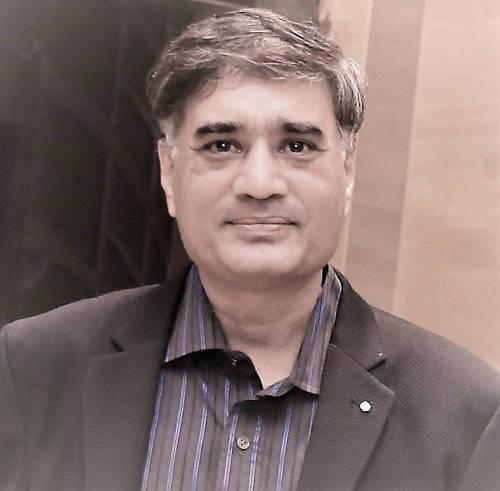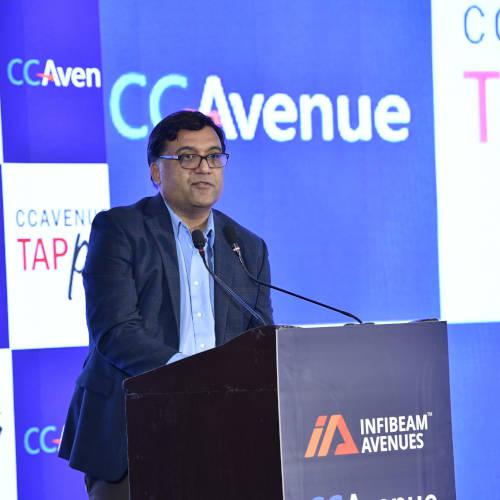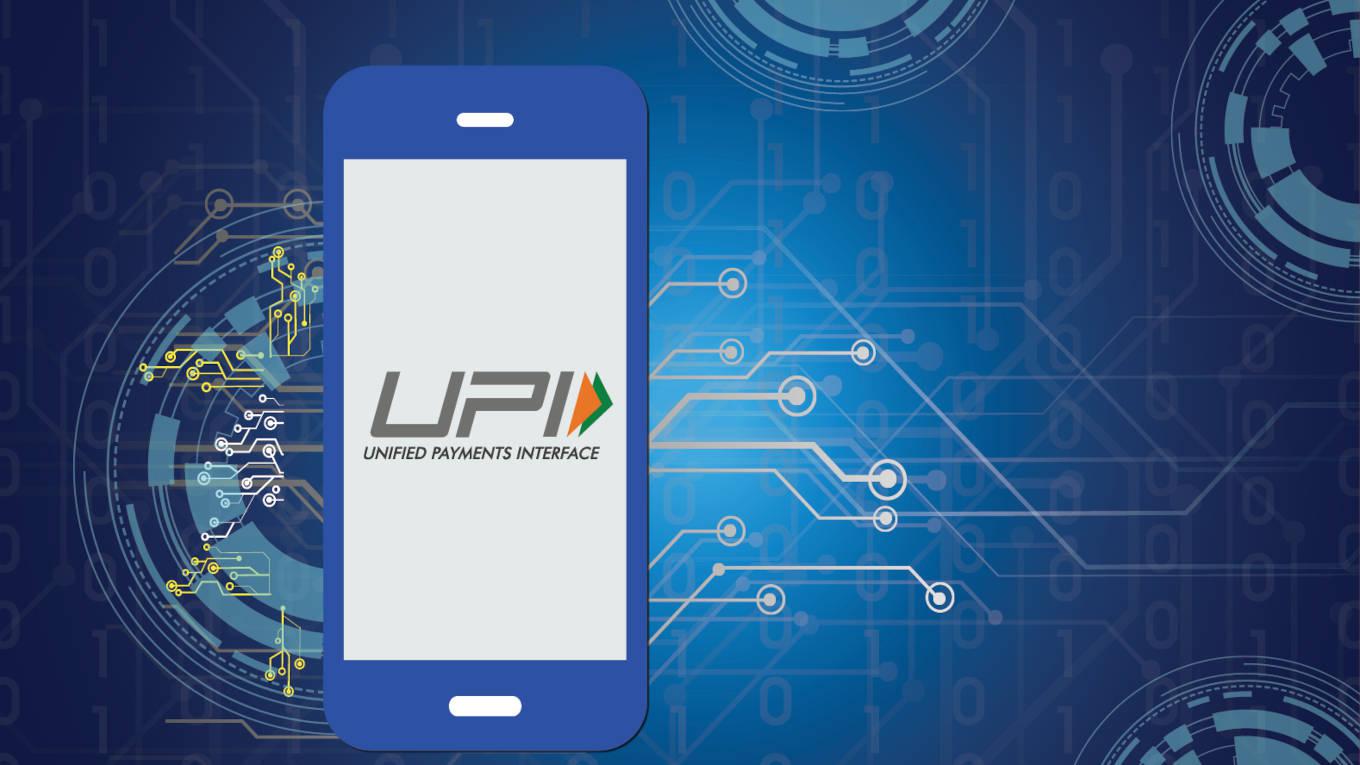-

The NPCI must also review the progress of the two dominant players in the intervening four months in adhering to the 30 per cent market share, at frequent intervals
Dilip Asbe, MD & CEO, NPCI
UPI makes things even more consumer-friendly by eliminating the need to enter long bank account and routing numbers for transfers. A virtual payment address, a simple username akin to an email address, replaces detailed information. UPI enables people to transfer funds from one bank to another bank without requiring an account number, bank name, account type, IFSC or other similar online payment option. This new UPI payment model can use a smartphone as a virtual debit card. UPI has also made instant money sending and receiving possible.
“UPI allows even the petty business person to start accepting digital payments without the need for a POS machine in India, where payment infrastructure is poor for accepting digital payments. UPI has eliminated the need for transacting parties to know the complicated payment credentials, and hence, makes payments convenient and transparent for all parties involved. UPI operates on a safe, stable, and robust platform that includes numerous security features that make it more secure than any other payment system currently in use. Biometric authentication in UPI will not only make payments more reliable but will also mark a significant step forward in the integration of next-generation technology with current payment systems. UPI has the potential to be a major facilitator of financial inclusion in India, enabling a large portion of the population to engage in the digital economy,” says Mahesh A and Ganesh Bhat in their paper on ‘Digital Payment Service in India - A Case Study of Unified Payment Interface’.
Seismic changes
In fact, the fintech industry in India has witnessed seismic changes in terms of new-age innovations over the last few years. The new-age fintech companies have been at the forefront of redefining banking and financial services and making them accessible to a larger number of consumers. With the fintech adoption rate of 87 per cent, which is much higher than the global average of 64 per cent as per a recent industry report, the industry is not only contributing to India’s larger economic landscape, but is also introducing continuous innovations to improve the overall customer experience.
The success of UPI is a classic example of how India’s finance sector is leading the way in unparalleled innovations. “Today, UPI has emerged as the de facto payment method for millions of Indians across the country. In July, UPI recorded a new milestone by crossing the 6 billion transaction mark in the month. With favourable initiatives like the UPI 123Pay and credit on UPI, it is only going to continue to grow exponentially and may become the backbone of financial transactions across businesses and individuals,” feels Suhail Sameer – CEO of BharatPe.
And this surge in usage is further demonstrated in the data too. In fact, the Ministry of Electronics and Information Technology (MeitY), Government of India is the torchbearer of digital payments in India and it is through concerted efforts of MeitY and the ministry of finance (MoF) that digital payment transactions have increased multiple times in 4 years.
-

In addition to merchant payments, a majority of peer-to-peer transactions are also being done using UPI, which has also made sending and receiving money a breeze
Sunil Pachisia, Director, Pratibhuti Vinihit Ltd
According to data released by the National Payments Corporation of India (NPCI), UPI recorded over 6.28 billion transactions in July 2022, a new record since the service was launched in July 2016. There has been a constant month-on-month increase in UPI transactions over the years and the number of transactions has nearly doubled since July 2021.
In July 2021, the number of transactions recorded was 3.24 billion, which increased to 6.28 billion in July 2022. This means that over 200 million transactions were done each day in July 2022. There has been a healthy increase in the value of transactions as well. During July 2022, the total value of UPI transactions was over Rs10.62 lakh crore.
With digital payments penetrating the country, UPI transactions are setting record highs every month. UPI transactions are popular as they provide broad-based access to the banking system using facilities already present with customers – mobile phones; there is no need for a separate card or visit to a bank branch.
“UPI has been a game changer for the Indian payment ecosystem and we at CCAvenue strongly believe that UPI is the future of payments in India. We had launched UPI acceptance for businesses and have been offering P2M payments (customer to merchant) on UPI since 2016. The conventional UPI collect flow, allows bank account holders to transact using a Virtual Payment Address (VPA), without entering additional bank information,” says Vishwas Patel, Director, Infibeam Avenues, a listed entity.
With significant growth in UPI transactions since its launch in April 2016 and a strong belief that UPI is the future of payments in India, CCAvenue.com has announced the availability of UPI payments through the app intent flow via UPI supported apps for its merchants. UPI app intent processes payments on native mobile applications using existing UPI supported apps like PhonePe, BHIM, and Tez, etc, installed on the customer’s phone offering a quick and seamless payment experience. It also avoids the need to use multiple apps (merchant, SMS, UPI app) while making payments. Most UPI apps including BHIM, PhonePe, Tez, WhatsApp, etc and various UPI-enabled bank apps have added support for the app intent flow.
“The conventional collect flow is lengthy and could be tedious for the customer as it involves many background API calls and the delayed delivery of SMS notifications may also leave the end customer with an unsatisfactory user experience. UPI app intent eases the payment process and improves the user experience considerably, making it lot smoother. Merchants will also stand to benefit a lot as it will reduce the probability of payment failures leading to higher conversion rates. So, it is quite reasonable to expect this platform will process 1 billion transactions a day in the next few years,” adds Patel.
Concentration emerging
While this is a remarkable success story of ‘Digital India’ there is a risk of concentration that is emerging. Two apps – Walmart-owned PhonePe and Google’s Google Pay – currently dominate the market of third-party UPI apps. Together they account for 82 per cent of the UPI transactions by volume (PhonePe with 47 per cent and Google Pay with a 35 per cent market share) and 84 per cent by the total value of transactions. These third-party app providers (TPAPs) are collectively on the verge of becoming a duopoly, leading to concentration and systemic risks with the possibility of a single point of failure.
-

UPI has witnessed an increasing market concentration. The market faces a risk as UPI is concentrated only with the top 3 players
Saurabh Puri, Chief Business Officer, Credit Cards, Zaggle
In the UPI ecosystem, TPAPs ride on the compliances of sponsor banks. There is a total of 25 TPAPs, of which two alone account for more than eight out of every 10 transactions. For instance, the risk of a single point of failure remains elevated when two players (both of these TPAPs are big tech US companies with deep pockets and can afford to give unlimited cashbacks) dominate such a high volume of activity, resulting in disorderly services and disruption in services.
One will recall that the Reserve Bank of India (RBI) in a policy paper in January 2019 – Authorisation of New Retail Payment Systems – had flagged the dangers of concentration risk in retail payment systems, from a financial stability perspective. ‘To foster innovation and competition, the Reserve Bank would encourage more players to participate in and promote pan-India payment platforms,’ the RBI had stated in the policy paper.
‘The possibility of single point of failure also makes the entity too big to fail. Absence of redundancy and fallback arrangements may impact continued availability,’ states the RBI policy. Besides, inadequate competition results in complacency as there is no need for constant upgradation and innovation in products and processes for retaining customers, the RBI pointed out, recognising that these concentration risks can lead to many concerns.
“UPI has witnessed an increasing market concentration. The market faces a risk as UPI is concentrated only with the top 3 players,” says Saurabh Puri, Chief Business Officer, Credit Cards, Zaggle, pointing out that to minimise concentration and risk, the NPCI came out with an SOP in March 2021. “This is in order to bring parity and reduce monopolisation and for the ecosystem to grow with more TPAPs and PSPs to capture the market. It’s a good opportunity now for banks who had earlier missed out, by providing rich user experience and use cases which were provided by fintechs earlier to attract customers,” adds Puri.
“Payment mode at any point should be a choice in the hands of the end customer. I see this as an opportunity for many new players and this will also lead to further product innovation and convenience. Ultimately, the customer will be the winner with many more choices and benefits. At the same time, new entrants will also have an opportunity to scale,” says Kumar Shekhar, VP - Member Operations, Tide India.
“Things are unclear at this point of time. A period of 2 years was provided to adhere to the market cap guideline which started from 21 January. Abrupt adherence is not possible when this is currently more or less a duopoly. A more detailed approach will be required on how to execute market cap without impacting the end customer. Personally, I think the date might be extended until we have operational infrastructure in place to monitor, control and process this with no impact on the end customer,” adds Shekhar.
-

Ultimately, the customer will be the winner with many more choices and benefits. At the same time, new entrants will also have an opportunity to scale
Kumar Shekhar, VP - Member Operations, Tide India
According to Kunal Jhunjhunwala, founder and MD of Airpay: “The risks are similar to those of any other business. When a small number of players control a substantial market share, if any of them fail, the whole system collapses. A prime example of this is what transpired with PhonePe on the day Yes Bank went down. Yes Bank was the key partner for all fintechs regarding UPI payments. Yes Bank went down in the sense that the RBI suspended operations, resulting in complete chaos. So, concentration risks are always present. The greatest cause for concern is that none of the existing or largest market players is Indian; they are all foreign. Even more concerning is the fact that none of the Indian players has been able to create an impression.”
‘Price game’
There are other concerns too. Historically, it has been found that monopoly or duopoly market players operate in a certain sequence or process. To gain market majority, large players invest heavily through predatory pricing, giving deep discounts and cashbacks. Once monopoly is obtained then the largest player monetises, using its services to gain back its investments with heavy returns. This overall ‘price game’ stifles innovation and makes it challenging for smaller players to deliver services at such a low cost due to economies of scale for large players.
Such price-led market concentration can end up raising the entry barriers of Indian fintech start-ups to innovate and be part of the UPI ecosystem. In addition, monopolistic trends may negatively impact customers on charges, access, quality of service, etc.
In November 2020, the NPCI first officially announced that it will issue a cap of 30 per cent on transaction volume clocked by a player, starting in 2021. Players will have a period of two years starting in January 2021, to comply with the cap mandate in a phased manner, the NPCI had said.
By March 2021, the payments infrastructure provider set out operational guidelines for digital payment players to limit their share. It said that the market cap of 30 per cent would be solely calculated on the basis of total volume of transactions processed on UPI during the preceding three months by a player, on a rolling basis.
Then, in an apparent move to minimise concentration and systemic risk, the NPCI came out with a detailed implementation standard operating procedure (SOP) in March 2021 stating that existing TPAPs, which command a market share of more than 30 per cent will be subject to the ‘volume cap’ stipulations after December 2022.
“The existing TPAPs, which are exceeding the volume cap will have a period of two years, ie from January 2021 until December 2022 to comply with the SOP in a phased manner and NPCI will review the same on a half-yearly basis starting from January 2022,” states the NPCI which enables the country’s digital payment and settlement systems.
-

The conventional UPI collect flow allows bank account holders to transact using a Virtual Payment Address (VPA), without entering additional bank information
Vishwas Patel, Director, Infibeam Avenues
“There is no choice but to consider this actively. They (NPCI) are wary of disrupting users and are, in effect, slowing down UPI growth,” says the fintech company which adds: “NPCI fears market disruption for consumers at a time when TPAPs such as PhonePe and Google Pay still hold about 47 per cent and 34 per cent market share. New entrants like WhatsApp Pay, Paytm and Amazon Pay have still to break the dominance of the leaders and make a significant dent in the market in terms of cornering market share. Tata Digital is also among the new entrants on UPI”.
With less than four months to go before the volume cap stipulations are scheduled to kick in, the government and the RBI should ensure they direct PhonePe and Google Pay to reduce their UPI market share to the prescribed limit at the end of the timelines. The NPCI must also review the progress of the two dominant players in the intervening four months in adhering to the 30 per cent market share, at frequent intervals. An email sent to Dilip Asbe, the MD & CEO of NPCI did not elicit any response on the matter till the time of going to press.
What can disrupt the market?
The most recent development of NPCI allowed Meta-owned WhatsApp to scale its user base to 100 million can disturb the market. WhatsApp Pay’s entry into UPI has been a matter of much industry concern with Paytm founder Vijay Shekhar Sharma having kicked up a storm over the Facebook-owned firm’s entry on the e-payment network way back in 2018. Since the approval in late April, WhatsApp Pay is offering cashbacks to existing users.
In response to this (cashbacks and discounts) a representative for WhatsApp says the company is “running a campaign offering cashback incentives in a phased manner to our users as a way to unlock the potential of payments on WhatsApp; we will continue to drive awareness of payments on WhatsApp as part of our broader efforts to bring the next 500 million Indians onto the digital payments ecosystem”.
“NPCI is encouraging new players and fintechs to enter the space. Banks can also now participate by creating better user experience to capture larger market share. However, NPCI and the regulator will have to work out the mechanism for executing the cap,” adds Puri.
According to industry experts, the lack of merchant-payment use-cases such as bill payments is also one of the major reasons why the messaging service has not been able to make a big dent on the UPI landscape.
PhonePe co-founder and CEO Sameer Nigam has previously said that a cap on UPI market share is not a good idea. He said: “I am not worried about cutting back market share. If I am playing by all the rules of interoperability, there is little I can do to reduce market share. I would like to believe that this is now user preference starting to play out based on the success rate (of transactions) and acceptance.”
-

I am not worried about cutting back market share. If I am playing by all the rules of interoperability, there is little I can do to reduce market share
Sameer Nigam, Co-founder and CEO , PhonePe
At least one of the biggest UPI apps has told its key stakeholders that the market cap mandate is unlikely to be implemented at the end of 2022, and that it is therefore not slowing down on plans to expand its user base.
The onus to ensure that the 30 per cent rule is implemented lies as much with the payments players as with the NPCI. The review could gauge parameters such as slowdown in new user on-boarding and merchant acquisition, reduction in marketing expenditure, etc. “In case no progress is observed on the parameters, the NPCI could direct the players to stop user acquisition altogether, as is envisaged in the SOP,” suggests a fintech player.
“Everyone is concerned about market share since it has been won based on cashback, and not good service or any other value or feature differentiator. Hence, anyone who enters the market needs to invest a lot of capital to gain meaningful market share. Also, with the new regulations and norms, it will become far more complex and less lucrative for any new entrant. Hence, I do not think there will be too many new entrants. Existing entrants such as Paytm are struggling to win market share from the likes of Google Pay, and PhonePe. There is no differentiator between the offerings beyond the amount of cashback you get per transaction,” says Jhunjhunwala.
Not a hurdle
India can ill afford to upset the rapid march of digitalisation of payments by not plugging regulatory gaps on concentration and system risks. “It’s a level playing field for all players. Any player with good customer experience and value proposition can capture the market, though it will require conviction. Hence market concentration is not acting as a hurdle but an opportunity to grow the market,” adds Puri.
According to MeitY, digital payments have become the mode of choice of transactions for the man on the street and these gains should not be allowed to slip away due to duopoly of US companies in the UPI ecosystem. MeitY may intervene by directly monitoring the implementation of the steering committee decision, considering the significant risk to ‘Digital India’ driven by digital payments.
Fintech companies that specialise in digital lending have already teamed up with banks and NBFCs to address the credit gap that exists amongst the unbanked and the under-banked, and to support India’s diverse socio-economic strata. These advancements will result in the steady growth of India’s fintech ecosystem that will take the industry to the $150 billion mark by 2025.
Any systemic disruptions because only two players dominate the market may potentially, and quickly, cascade through the veins of India’s economy, also cascading through the charming vegetable and other markets.
Lastly, RBI needs to take cognisance of the deliberate delays caused by the NPCI and issue the necessary directions to it, along with timelines. One should carefully scrutinise any eventual action the NCPI and RBI take, in the next 6 months, concerning this.
-

With favourable initiatives like the UPI 123Pay and credit on UPI, it is only going to continue to grow exponentially and may become the backbone of financial transactions across businesses and individuals
Suhail Sameer, CEO, BharatPe
Should UPI be chargeable, and if not, is the model then sustainable?
There should be absolutely no charges on UPI payments to either merchants or customers since doing this would slow down the adoption of digital payments. The other modes of digital payments like credit and debit cards have not witnessed widespread adoption among merchants due to the MDR charges involved in accepting payments through these modes.
Banks currently save the cost of operations due to UPI transactions since the cost of mobile banking is far lower than branch banking. Further, banks and other UPI apps offer other value-added services on top of UPI, including but not limited to personal and merchant lending, insurance and bill payments, et al, through which they make money.
Banks acquire transactions through these third-party apps (such as PhonePe and GPay). As per the UPI model, these apps are sponsored by at least three banks.
Financial inclusion
In fact, UPI transactions have contributed to the growth of the Indian economy through increased financial inclusion, improved direct tax compliance, and collection. Hence, it makes sense for the government to continue to subsidise
UPI transactions since the cost incurred by the government by doing so is far less than the intangible benefits it brings to the Indian economy. The cost of cash is much higher than digital payments, and is saved due to the increased adoption of the same.
In India, there was a massive increase in GST collections even during Covid times. This was possible only due to continued digital payments to offline as well as online businesses. Hence, digital payments, particularly UPI, were responsible for increased GST collections.
So, to conclude, the subsidy borne by the government is a fraction of the increased collections in GST that it is able to gain. The subsidy on UPI is essentially not a cost to the government, but a means to bring financial inclusion, draw more people into the tax net, increase tax compliance and collection and further the digital economy in India.









































